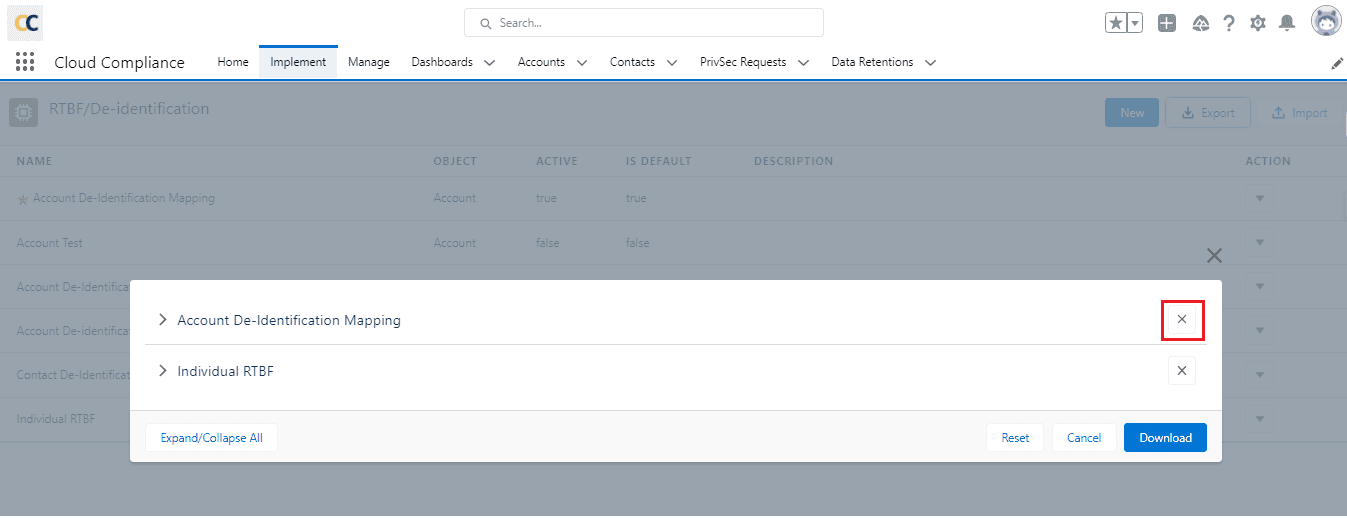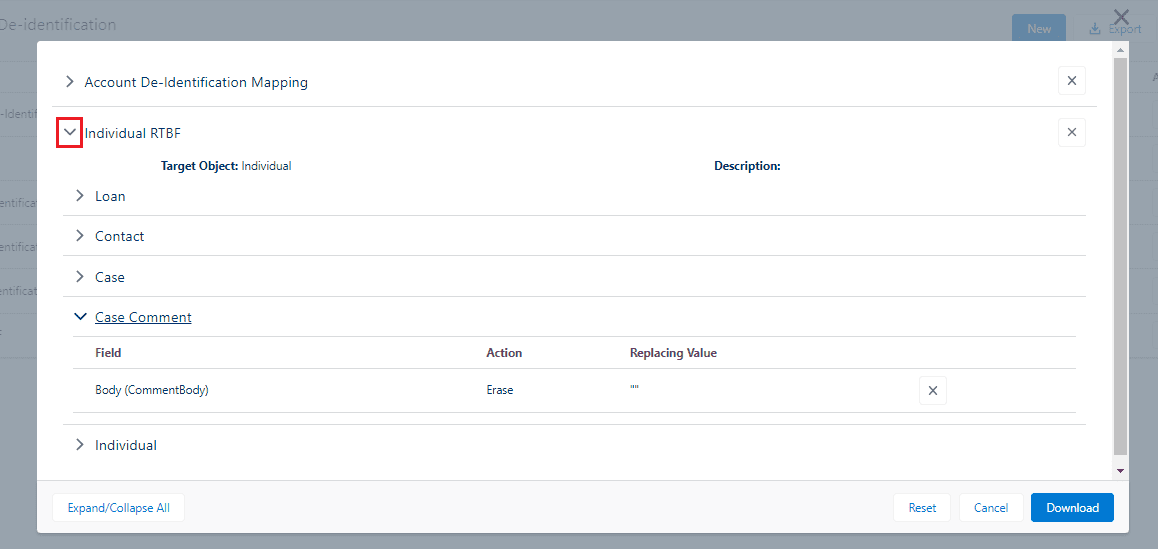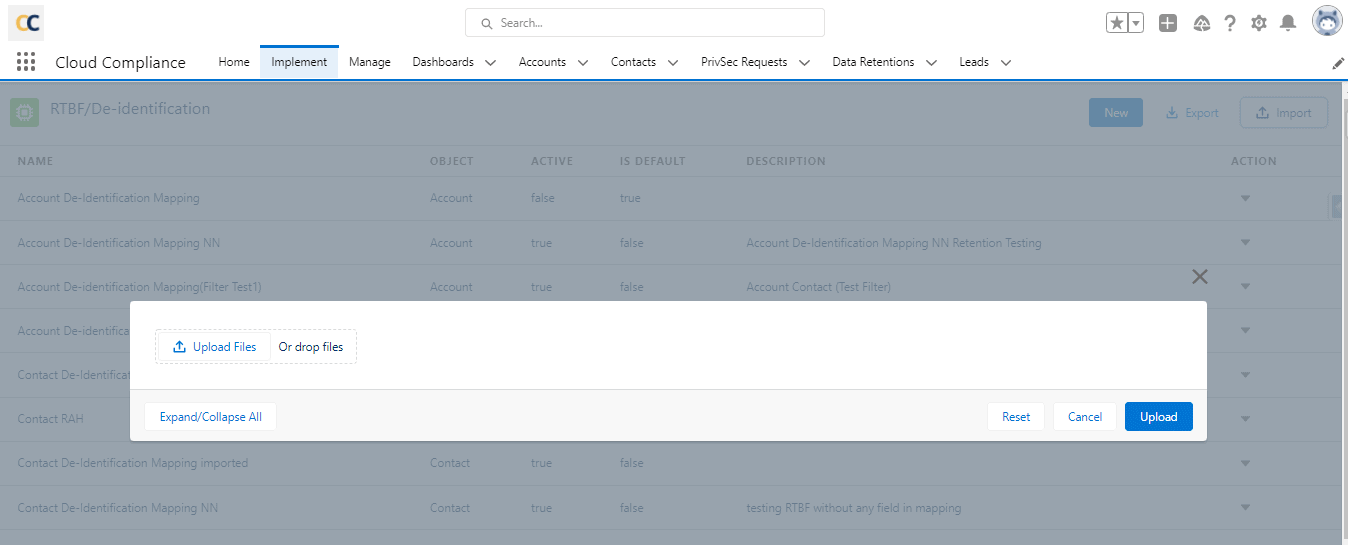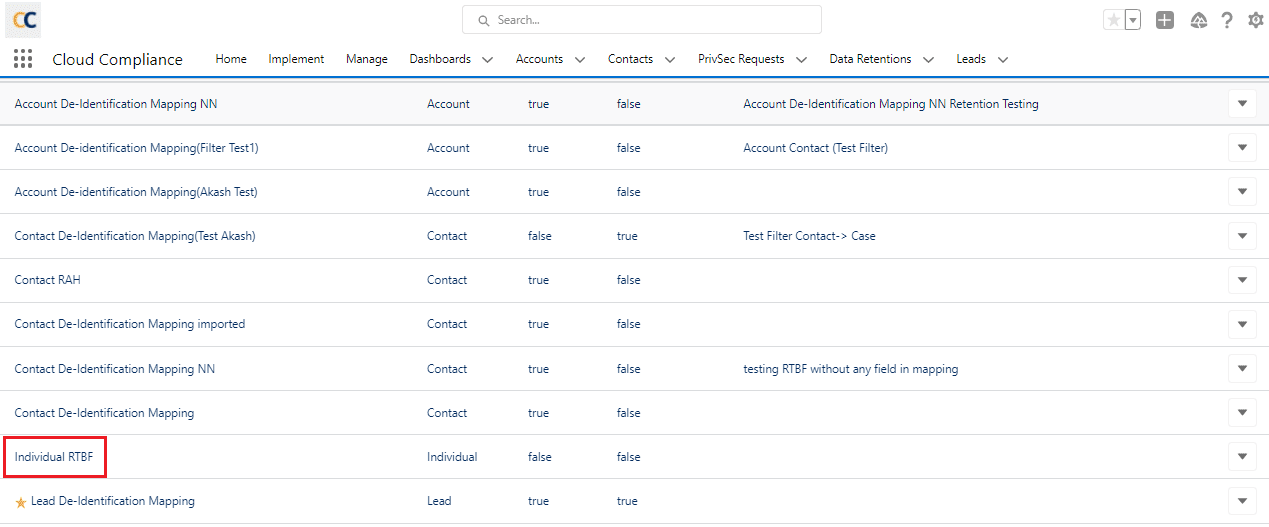In the Cloud Compliance application, the “RTBF” feature uses mappings that store data in the custom objects available in a package. This document showcases how object mappings can be transferred from one org to another in order to efficiently migrate data from sandbox to production using the Import/Export feature of the Cloud Compliance application.
Note – This feature is available from CC version 3.0 onwards.
Solution Steps –
1. Navigate to the Implement tab in the application. Open the RTBF/De-identification mapping section by clicking on the View button.

User will find a list of all the Mappings that were created as per the business requirement.

2. On the right side of the RTBF/De-identification section, user will find three buttons New, Export and Import. Here user can click on to Export button in order to fetch all the mapping details in JSON format.
Note: Only active mapping will be fetched.

3. Once user clicks on the Export button one pop-up will appear on the screen which includes a list of all the mappings that are active. In this case, the application will pick “Account De-Identification Mapping” and “Individual RTBF” as shown below screenshot.

4. In this Pop-up user will find the option to remove the mapping from the list of all the active mappings in case the user wants to remove any by clicking on the ‘X’ symbol.

5. User can also see all the associated object mappings and all the fields of respective mappings by clicking on the arrow symbol before each mapping name.

Furthermore, user can also remove fields from the mapping before downloading the mapping JSON file just by clicking on the ‘X’ symbol next to the field name of each mapping.
6. Once everything is set as per the requirements, the user can click on the Download button to download the mapping file in JSON format.

7. Now the file is downloaded. Login to the Salesforce org where user wants to migrate mappings.
8. Navigate to the Implement tab in the application. Open the RTBF/De-identification mapping section by clicking on the View button. User will find a list of all the existing mappings or NO mappings in destination org.

9. On the right side of the RTBF/De-identification section, user will find three buttons New, Export and Import. Here user can click on to Import button in order to fetch all the mapping details in JSON format.

10. Once user clicks on the Import button one pop-up will appear on the screen which includes the upload file option. Here user can click on the “Upload Files” button to select a file from the computer or can drag a downloaded file in this section in order to upload all the RTBF/De-identification mappings.

11. Once the file is uploaded, user can see a list of mappings and respective fields within the same pop-up. At this stage also user can remove the mapping or fields from mapping before clicking on the Upload button.

12. Once user verifies the mappings and fields in mapping, user can click on the Upload button.

13. On successful upload, the user can see the alert box with the message “Mapping Imported” and then the user can see all the mappings migrated to destination org.
Note – Make sure to activate each mapping in the destination org so the CC app will verify those mappings and their fields. Also will throw an error if something goes wrong during the activation of mappings. Once all the mappings get activated then only user can use those mappings for RTBF/De-identification.




